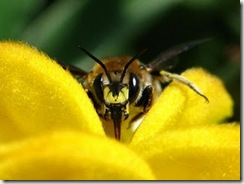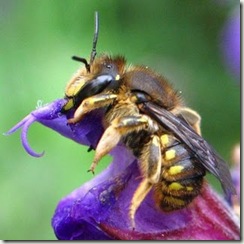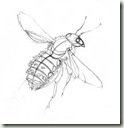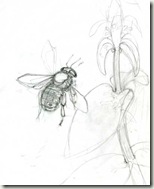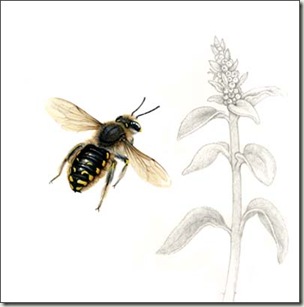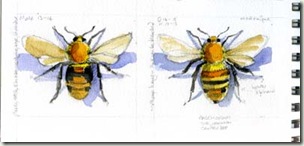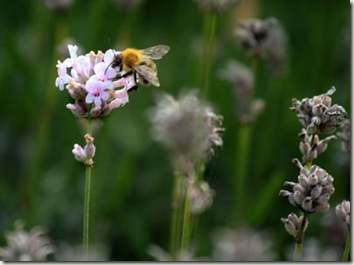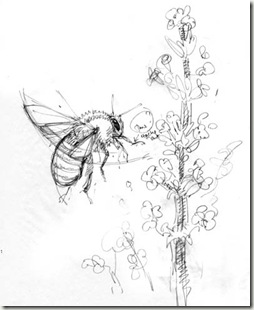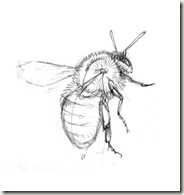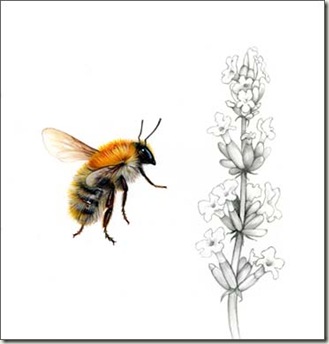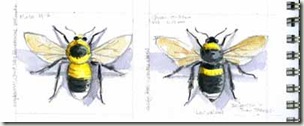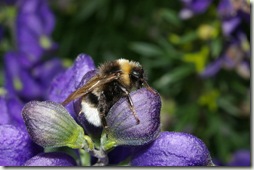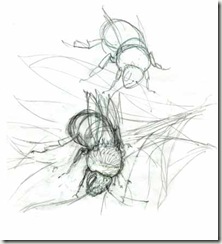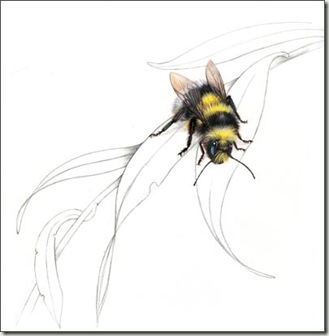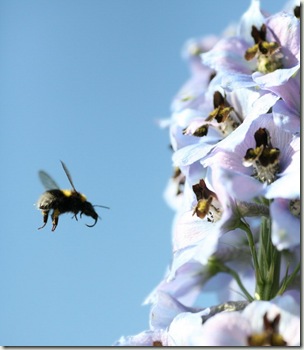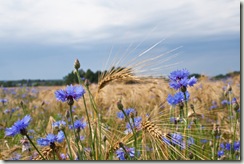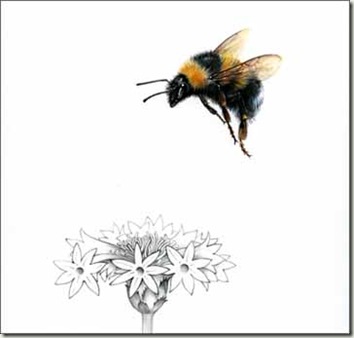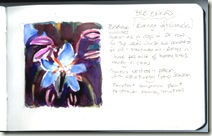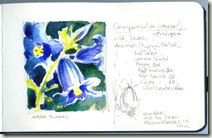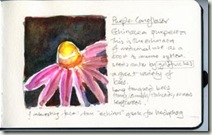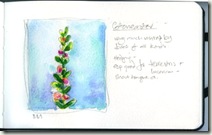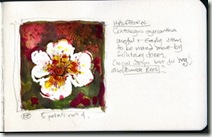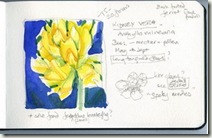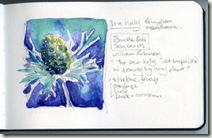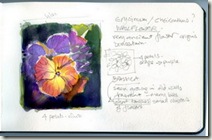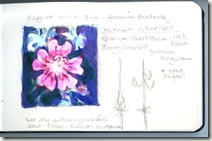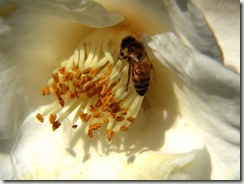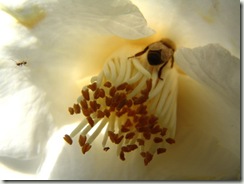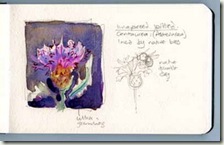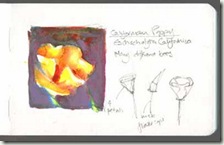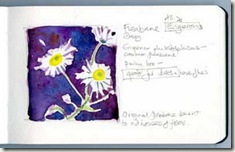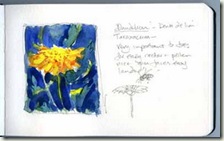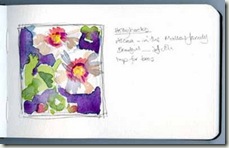I was trying to adopt a “less is more” approach for this post as I had written about the Anthidium, or Wool Carder bees when I painted Anna’s Bee back in December and included some of Fabre’s lovely writing about what he called “The Cotton Bee”.
But there is so much to know about these really attractive rather wasp-like little bees. So, I can do no better really than to send you over to biologist Blackbirds’s excellent Bug Blog, to read the posts tagged with Anthidium manicatum here.
There are 4 excellent posts with some wonderful photographs and observations of behaviour and links. Here are just two photos: the male with his lovely yellow face and the shy little female.
Photos by Blackbird from Bug Blog.
This is a short quote from the post entitled “ Wool Carder Bee Watching 2: the Female”
“The first time I came across Anthidium manicatum, the Wool-Carder Bee was after hearing it, not the usual humming noise bees make when flying, but that produced by a female’s jaws cutting the hairs of a plant I had recently planted in the garden, Lamb’s Ears (Stachys byzantina). Since then, this has been a plant that has not been missing from the garden, just because it is a sure way of attracting Wool-Carder bees.”
If you are interested in these bees and others there are many other wonderful posts in the blog. The Anthidium family have many fascinating variations on the black and yellow patterning. There is a very good page showing different types on the French “World of Insects” site, compiled by Alain Ramel here.
Gilbert White and Selborne
It’s inevitable that we who like bees will find the same references from the great Natural History writers or a nicer way of putting perhaps the ‘natural philosophers’.
Blackbird has also included Fabre in the anthidium posts and this passage from Gilbert White’s summer observation from “The Natural History of Selborne” which, on a gloomy cold rainy day here made me smile! His entry is from July 11th 1772.
“Drought has continued five weeks this day. Watered the rasp and annuals well. There is a sort of wild bee frequenting the garden-campion for the sake of its tomentum, which probably it turns to some purpose in the business of nidification. It is very pleasant to see with what address it strips off the pubes, running from the top to the bottom of a branch, & shaving it bare with all the dexterity of a hoop-shaver. When it has got a vast bundle, almost as large as itself, it flies away, holding it secure between its chin and its forelegs.”
But I came across this passage from a different source .. from the lovely annotated site “The Natural History of Selborne, Journals of Gilbert White” compiled by animator Sydney Padua. You can read entries by month and date which show Gilbert White’s simple observations from different years, here are 2 entries for tomorrow, the last day of February.
- “1769: February 28, 1769 – Raven sits.
- 1768: February 28, 1768 – Wet continues still: has lasted three weeks this day. Pinched off the tops of the cucumber plants, which have several joins.”
Reading back over passages from this wonderful book, which our family, as many others, has never been without, I had forgotten..( how could I!) about Timothy the Tortoise, and had a flash of memory about our much loved childhood tortoises.
The site is full of links to Gilbert White, the Journals, Selborne etc. and one of my favourite quotes is .. in response to people writing to her and asking if their version of the book is valuable (there are thousands)..
“The best reply was my husband’s, to an email that read in its entirety, “I have a copy of “The Natural History of Selborne is it worth anything” — “If you read it, yes.”
Sydney, by the way is one of those excellent animators I was talking about yesterday whose drawing skills are so very good. See her animation site and wonderful sketches here.
The Painting
I had a small dilemma. I want to paint the male bee as his markings are slightly more showy and wanted to show that rather intimidating spiked tail, but I also wanted to include the wooly plant Stachys byzantina (Lambs Ears) which the bees use to make their nests.
This could be thought of as misleading because it is the female who makes the nests but I was encouraged to read that the males also feed on Stachys flowers, and, of course, hang around the plant too in search of a mate.
I initially thought about including a bigger leaf with a tiny drawing of the female carding.. but common sense prevailed. I was able to use Anna’s specimen again too, but had a slight accident and lost half of it on the floor..after an hour searching with a torch I did retrieve it. Half a bee is not easy to find on a patterned carpet.
But anyway, here is the male heading hopefully over to the Lamb’s Ears!
______________________________________________________
The Wool Carder bee, Anthidium manicatum and Wooly Lamb’s Ear Stachys byzantina
Watercolour and pencil on Arches HP. 7’” square approx.

